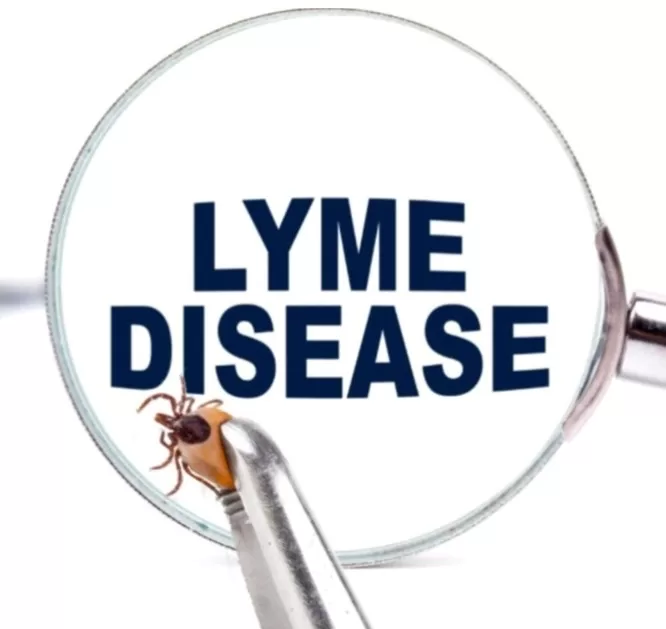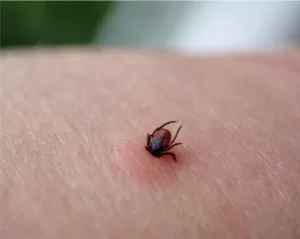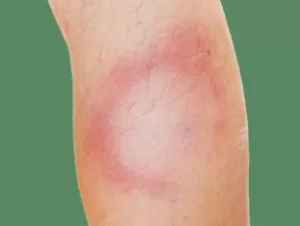In our fast-paced world of convenience foods and busy lifestyles, we often overlook micronutrients, which…

Tick bites, rashes & treatments
Most people are aware that Lyme disease, also known as Lyme borreliosis, is a severe infection caused by bacteria (spirochetes) that are transmitted to humans following a bite from blood-feeding insects and arachnids, particularly ticks. It is not the actual tick that causes this vector-borne disease; Lyme disease is caused by Borrelia bacteria, which is spread by ticks.
Worried you’ve been bitten by a tick?
Ticks transmit infection only after they have attached to their host. They typically feed for more than 24 hours. The risk of contracting an infectious agent is reduced the sooner the tick is properly removed.
 It is best to remove a tick with a tick removal kit, to ensure that you have removed all of the tick. When ticks bite, they burrow their heads and barbed, skin-piercing, blood-sucking mouthpart into the skin and so, if their body is broken off and the head and mouthpart remains in the skin, the risk of transmission of Lyme is still present. You may wish to learn how to properly remove a tick from Lyme Disease Action or Lyme Disease UK.
It is best to remove a tick with a tick removal kit, to ensure that you have removed all of the tick. When ticks bite, they burrow their heads and barbed, skin-piercing, blood-sucking mouthpart into the skin and so, if their body is broken off and the head and mouthpart remains in the skin, the risk of transmission of Lyme is still present. You may wish to learn how to properly remove a tick from Lyme Disease Action or Lyme Disease UK.
Not all ticks carry the Borrelia bacteria that causes Lyme disease. You can have any tick tested to see if it carries the causative agent for Lyme disease in humans. Keep a suitable container in your home so that you can store and freeze the tick and then talk to our Reception to find out how to send it for PCR testing. It is a good idea to photograph the site of the tick bite to accurately monitor if there are any changes in the skin in the surrounding area.
The symptoms of Lyme disease will not occur immediately and may take about a week to occur. Early symptoms can mimic the summer flu or another viral illness and may include a fever, achiness, fatigue, and/or headache or neck ache. The majority, but not all, people who have contracted Lyme from a tick bite will develop a rash around where it was feeding, which is a red, expanding rash that is usually bigger than 3cm in size and may last for a few days or weeks. It is not typically painful or itchy.
Lyme disease is diagnosed on symptoms and evaluation, including evaluation of exposure and examination of the rash. Diagnosis can be difficult, particularly if a Lyme disease rash does not occur. The other symptoms are quite common and can be mistaken for other conditions. It is hypothesised that there are about 200 other diseases that Lyme symptoms may mimic, such as ME/CFS, fibromyalgia, MCS, and mould and mycotoxin exposure. There are various pathology tests available and the most frequently used tests measure antibodies in the blood. For some people, this clearly shows that they need to be treated for Lyme disease. However, due to the nature and life cycle of the bacteria that causes Lyme, at this time, inaccurate results are possible.
If you are worried you have a Lyme disease rash, it is best to see a physician with experience identifying Lyme disease. Our Infectious Diseases Specialist Daud Mohamed has been successfully treating Lyme disease and chronic Lyme disease patients for many years. The primary treatment for Lyme disease is a course of appropriate antibiotics. The types and duration of the treatment will vary between individuals and the stage of the disease. Most people diagnosed and treated early with the appropriate antibiotics get better. However, it is estimated that 10-20% of people develop chronic ongoing symptoms. Chronic Lyme disease symptoms include severe pain, cardiac problems, facial palsy and swollen joints and arthritis.
In addition to antibiotics, the Lyme spirochete appears to be very heat-sensitive so near-infrared light hyperthermia treatment may be beneficial.
Visit our Lyme disease page for more information on how we can help you recover.
More about ticks
Ticks thrive between early spring and late autumn, although can be found throughout the year in the UK.
Ticks can be found across large parts of the UK. They are usually found in and around woodlands, heathland, moorland and in some grassland. It is believed they are increasing in number in the UK because of increasing numbers of deer. There are about 20 species of ticks in the UK, many feeding on specific wild animals. However, the deer tick, Ixodes ricinus, is known to feed on nearly all animals, including people.
Ticks spend most of their 3-year life in leaf litter. However, when conditions are right, they climb up out of the vegetation and try to find an animal to feed on. While they do no jump or fly and are blind, they wait on twigs, grasses and flowers, sensing the carbon dioxide we breathe out, the vibrations we make as we walk, and our body heat, waving their front legs to quickly climb on to passers by.
Ticks can become infected with the harmful-to-humans Lyme bacteria at various stages of their lives. For example, adult ticks can acquire Borrelia from an infected host and can pass their infection to the larvae.
Generally, ticks are very small and not easy to see. It is good practice to thoroughly brush off your clothes after being in areas where ticks may be found and thoroughly inspecting your skin after your clothes have been removed. If you find any ticks, remove them properly and carefully as soon as possible.
Monster Ticks: extra-large form of insects invade Europe
Hyalomma lusitanicum are believed to be four times larger than normal ticks and are carried by wild animals, including rabbits. Ticks are normally between 3mm and 5mm, but the monster versions have been detected in Germany, Sweden and Northern Italy, as well as Spain and Turkey, sparking alarm they can survive in colder climates. Not all these ticks carry Lyme disease, however, it is best to safely remove them just as you would smaller ticks.
Other diseases transmitted by ticks
According to the European Center for Disease Prevention and Control, different varieties of ticks can transmit different diseases. Along with Lyme disease, as discussed above, ticks can spread many different diseases, such as:
Crimean-Congo hemorrhagic fever – symptoms include high fever, muscle pain, dizziness, abnormal sensitivity to light, abdominal pain and vomiting. Outbreaks of the disease have been reported in several regions of Asia and Africa. While rare in Europe, cases have been reported in in the Balkan and Mediterranean regions.
Human granulocytic anaplasmosis – caused by the bacterium Anaplasma phagocytophilum. Granulocytic anaplasmosis is the most widespread tick-borne infection in animals in Europe.
Rickettsiosis – transmitted by ticks, fleas, lice and mites, Rickettsial diseases vary considerably in severity from self-limiting mild illnesses to severe life-threatening infections, particularly if complications arise. Most patients present with fever, headache and malaise, and a widespread rash of some description.
Tick-borne encephalitis – this is a human viral infectious disease involving the central nervous system, and occurring in many parts of Europe and Asia. The virus is transmitted by the bite of infected ticks, found in woodland habitats.
Tick-borne relapsing fever – caused by several species of spiral-shaped bacteria – spirochaetes – that are transmitted to humans through the bite of infected soft ticks. The main symptoms of TBRF are high fever, headaches, and muscle and joint aches.





